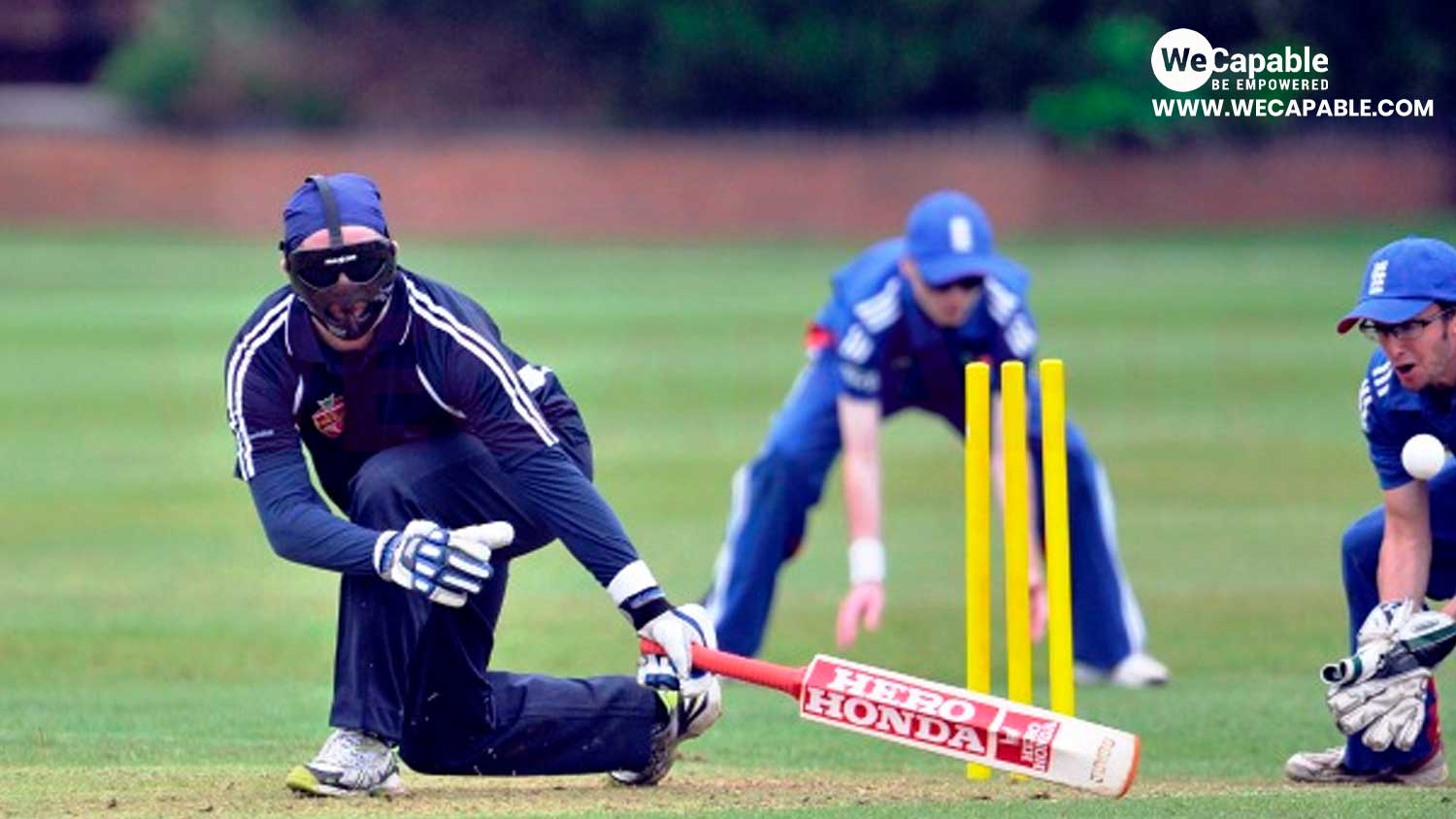‘Cricket fever’… ever heard this term? Undoubtedly you have heard that. Cricket, being the second most followed sport in the world, leaves none unaffected by its contagious passion. Though men’s cricket is the most popular segment, we have other segments of cricket including women’s cricket, wheelchair cricket, and the blind cricket.
Blind cricket is the game of cricket specifically designed for the blind and partially sighted players. This adapted version of the game is governed internationally by the World Blind Cricket Council (WBCC) since 1996. Blind cricket is played in three formats – 40 overs game (equivalent to ODI), 3 days game (comparable to test), and T20 game.
Most readers might be aware of the rules and regulations of cricket. Let us today see what are the rules of the blind cricket.
How is Blind Cricket Played?
The overall game and its rules are similar to the original format of cricket but obviously, there are some adaptations that have been made to suit the special needs of the blind players and partially sighted players.
Rules for the Blind Cricket Game Settings
- The pitch is standard 22 yards but the field is smaller. The boundaries are 45 yards at the minimum and 55 yards at the maximum.
- The pitch for the game is artificial.
- The wicket (stump) is slightly larger and is made of metal tubes (may be wooden or plastic as well) painted in fluorescent colors.
- There are no bails on the cricket stump.
- The wicket mandatorily needs to be fluorescent red or orange.
- The ball is slightly bigger than the regular cricket ball and is filled with ball bearings so that they can provide audio cues to the batsman and the fielders.
Rules for the Blind Cricket Players
- There are 11 players in blind cricket just like the original format but there are strict rules for team composition.
- A team can have a maximum of 4 partially sighted players of B3 category
- A team must have 3 partially blind players of B2 category
- A team must have a minimum of 4 completely blind players of B1 category
- Each player needs to wear appropriately colored wristbands so that their level of vision can be clear to the umpires. This is done because each category has a different set of rules for them.
- B1 players need to have a white wristband on the right wrist or may have one white strip on the right upper arm of the playing t-shirt
- B2 players need to have a red wristband on the right wrist or two white strips on the right upper arm of the playing t-shirt
- B3 players need to wear a blue wristband on the right wrist or should carry three white strips on the right upper arm of the playing t-shirt
Rules of the Blind Cricket Game
- A bowler must bowl only underarm
- The delivery needs to pitch at least twice before reaching the batsman if the batsman is completely blind. It can pitch once for a partially sighted batsman.
- The bowler needs to ask ‘ready’ before throwing the ball and the batsman replies ‘yes’ to indicate to the bowler that he is ready to play
- The bowler is required to shout ‘play’ when throwing the ball. If the bowler fails to do so the ball is considered a ‘no-ball’. Umpire may also decide a ball to be a ‘no ball’ if the bowler said ‘play’ too early or too late for the batsman to play.
- A totally blind batsman cannot be stumped out. He must be found leg-before-wicket (LBW) twice before getting out.
- Totally blind fielders can take a catch on the bounce.
- A totally blind batsman can have a runner.
- If a blind batsman takes a run, it gets doubled.
Use the citation below to add this article to your bibliography
"Rules of the Blind Cricket for Team, Bowling, Batting and Fielding." Wecapable.com. Web. July 27, 2024. <https://wecapable.com/blind-cricket-rules-team-bowling-batting-fielding/>
Wecapable.com, "Rules of the Blind Cricket for Team, Bowling, Batting and Fielding." Accessed July 27, 2024. https://wecapable.com/blind-cricket-rules-team-bowling-batting-fielding/
"Rules of the Blind Cricket for Team, Bowling, Batting and Fielding." (n.d.). Wecapable.com. Retrieved July 27, 2024 from https://wecapable.com/blind-cricket-rules-team-bowling-batting-fielding/


Leave a Reply